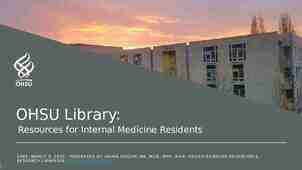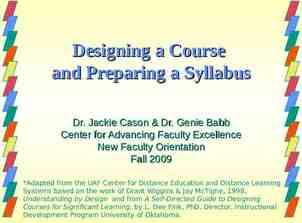FILTRATION FILTRATION AND AND BACKWASHING BACKWASHING A. Amirtharajah
39 Slides387.00 KB

FILTRATION FILTRATION AND AND BACKWASHING BACKWASHING A. Amirtharajah School of Civil and Environmental Engineering Georgia Institute of Technology Atlanta, GA 30332 CEE - Georgia Tech

FILTRATION: FILTRATION: THE THE GREAT GREAT BARRIER BARRIER TO TO PARTICLES, PARTICLES, PARASITES, PARASITES, AND AND ORGANICS ORGANICS CEE - Georgia Tech

Particle Particle Removal Removal Improve taste, appearance Sorbed metals and pesticides Pathogens: bacteria, viruses, protozoa CEE - Georgia Tech

Organic Organic Removal Removal in in Biofiltration Biofiltration Prevent biofouling of distribution system Remove DBP precursors CEE - Georgia Tech

Multiple-Barrier Multiple-Barrier Concept Concept chemical addition watershed protection direct filtration sedimentation filtration disinfection raw water screen coagulation flocculation waste sludge backwash recycle waste sludge CEE - Georgia Tech distribution system

Fundamental Fundamental and and Microscopic Microscopic View View 1. Filtration: Attachment 2. Backwashing: CEE - Georgia Tech Detachment Detachment

Mechanisms Mechanisms of of Filtration Filtration particle, dp transport attachment collector, dc CEE - Georgia Tech fluid streamline detachment

History History of of Filtration Filtration Theory(1) Theory(1) Phenomenological - Macroscopic View Basic Equations: Ives: CEE - Georgia Tech c u 0 . . . . (1) z t c c . . . . (2) z o 1 1 o a b 1 1 o u c

Trajectory Trajectory Theory Theory dp dc Viruses 0.01 -0.025 m dc dc Bacteria 0.2 - 1 m Cryptosporidium 3 - 5 m Diffusion Sedimentation dp 1 m dp 1 m CEE - Georgia Tech Interception Giardia 6 - 10 m

History History of of Filtration Filtration Theory Theory (2) (2) Trajectory Analysis - Microscopic View 1 dc 1.5 D G I c dz dc CEE - Georgia Tech

Detachment Detachment -- Macroscopic Macroscopic View View Mintz: c a oc z u c Ginn et al.: a d c z CEE - Georgia Tech

Particle Particle Size Size Distribution Distribution Function Function 1.0E 8 Ao n (#/mL m) 1.0E 7 1.0E 6 1.0E 5 1.0E 4 1.0E 3 1.0E 2 1.0E 1 n (d p ) A 0 (d p )- 1.0E 0 0.1 CEE - Georgia Tech 1 dp ( m) 10 100

value from power law function Variation Variation in Across in Across aa Water Water Treatment Treatment Plant Plant 4 3.5 n 11 3 n 11 2.5 n 22 2 Raw water CEE - Georgia Tech Coagulated water Filtered water

Filter Filter Effluent Effluent Quality Quality Filter Ripening Outlet Effluent Turbidity Backwash remnants TB above in media media TM Function Clean backwash Media of influent TU Strainer Filter breakthrough TU CEE - Georgia Tech TM TB Time TR

Alum Alum Coagulation Coagulation Diagram Diagram mol /L Log (Al) Zeta Potential Alum - mg/L as Al 2(SO 4)3 14.3H 2O CEE - Georgia Tech pH of Mixed Solution

Alum Alum Coagulation Coagulation Diagram Diagram A l(O H ) 10 0 2 3 0 Log[Al]-m ol/L -4.5 -5.5 -6.5 -7.5 -8.5 3 C h a rg e N e u tra liza tio n A l(O H ) 1 R e sta b iliza tio nZ o n e (b o u n d a rie sv a ryw ith d iff e re n tw a te rs) A l TO T A L 4 CEE - Georgia Tech 1 0 S w e e p C o a g u la tio n 5 6 p H o fM ix e dS o lu tio n 7 8 0.3 9 Alum-m g/L -3.5

Attachment ( ) 0 (-) Detachment Filter coefficient ( ) Conceptual Conceptual Model Model of of Filtration Filtration Filter Ripening CEE - Georgia Tech Effective Filtration Turbidity Breakthrough Time Wormhole Flow

Question: Why is it easier to remove alum or clay particles in contrast to polymer coated particles or micro-organisms during backwash? CEE - Georgia Tech

Sphere Sphere -- Flat Flat Plate Plate Interactions Interactions (1) (1) Van der Waals Force: A a Fv - 1 6z z a z Electrostatic Double Layer Force: 2 Ze 1 Ze 2 kT Fe - 64 a tanh tanh exp z Ze 4kT 4kT CEE - Georgia Tech

Sphere Sphere -- Flat Flat Plate Plate Interactions Interactions (2) (2) Born Repulsion: Fb - Aa 6 8 180z Structural Forces Hydration Force: z Fh - 2 aKh exp - h Hydrophobic Force: z FH aC exp - D CEE - Georgia Tech

Detachment Detachment During During Backwashing Backwashing Hydrodynamic Forces Adhesive Forces 1. 2. CEE - Georgia Tech Spherical Particles - pH and Ionic Strength Non-spherical Particles - Ionic Strength Kaolinite Platelets

Backwashing Backwashing Filters Filters Weakness of fluidization backwash Improvement due to surface wash Collapse-pulsing air scour The best for cleaning CEE - Georgia Tech

Theory Theory for for Collapse-Pulsing Collapse-Pulsing V aQ a % Vmf 2 b a, b coefficients for a given media Qa air flow rate V % Vmf CEE - Georgia Tech Percentage of minimum fluidization water flow

Equations Equations Describing Describing CollapseCollapsePulsing Pulsing for for all all Filter Filter Beds Beds Filter Media Equation Applicable range of Qa Sand 0.8 Qa %(V/Vmf) 43.5 1.8 to 4.6 scfm/sq ft Anthracite 1.7 Qa %(V/Vmf) 43.0 Dual Media 1.7 Qa %(V/Vmf) 39.5 GAC 3.3 Qa %(V/Vmf) 26.6 GAC-Sand 3.0 Qa %(V/Vmf) 27.2 Quarles WTP Dual Media 1.2 Qa %(V/Vmf) 49.1 Vmf based on d90% size. CEE - Georgia Tech 2 2 1.5 to 4.2 scfm/sq ft 2 0.8 to 2.4 scfm/sq ft 2 Qa 2.7 scfm/sq ft 2 Qa 2.0 scfm/sq ft 2 1.4 to 4.0 scfm/sq ft

Total force (nN) Total Total Interaction Interaction Force: Force: Hydrophilic Hydrophilic Clay Clay Vs Vs Hydrophobic Hydrophobic Bacteria Bacteria 60 50 40 30 20 10 0 -10 -20 -30 -40 -50 -60 Clay Bacteria 0 CEE - Georgia Tech 1 2 3 4 5 6 7 8 Separation distance (nm) 9 10

Biofiltration Biofiltration Ozonation Microbial counts in effluent Head loss Effect of biocides Particle removal CEE - Georgia Tech

Biological Biological Filtration Filtration and and Backwashing Backwashing Precursor Removal Minimize DBP’s Effect of Hydrophobicity CEE - Georgia Tech

Repulsion Energy barrier Distance Attraction Potential Energy of Interaction Bacterial Bacterial Adhesion Adhesion Release of extracellular polymeric substances at secondary minimum Primary minimum CEE - Georgia Tech Secondary minimum

Turbidity Turbidity and and Bacterial Bacterial Removal Removal During During Backwashing Backwashing HPC (cfu/mL) 60 50 HPC Turbidity 5 10 40 30 104 20 10 3 10 0 0 CEE - Georgia Tech 2 4 6 Backwash time (min) 8 Turbidity (NTU) 70 106

Backwashing Backwashing Biofilters Biofilters Collapse-pulsing air scour Cleans better No deleterious effect Chlorinated backwash reduces TOC removal over time Chloraminated backwash less than 2.0 mg/L may be used CEE - Georgia Tech

Pathogenic Pathogenic Protozoa Protozoa Low infective doses Resistant to chlorine disinfection Analytical techniques CEE - Georgia Tech

Outbreaks Outbreaks of of Cryptosporidiosis Cryptosporidiosis Surface and groundwater sources Runoff Sewage spills Coagulation Filtration rate changes Backwash recycle Contaminated distribution system CEE - Georgia Tech

Particle Particle Counts Counts Continuous on-line monitoring Low operating costs High sensitivity Detachment of aggregates CEE - Georgia Tech

4.5 4 3.5 3 2.5 2 1.5 1 0.5 0 Log Removal of Cryptosporidium Log Removal of Giardia Cyst Cyst Removal Removal vs vs Particle Particle Removal Removal 0 1 2 3 Log Removal of 7 - 11 m Particles 4 4.5 4 3.5 3 2.5 2 1.5 1 0.5 0 0 1 3 4 5 Log Removal of 4 - 7 m Particles Nieminski and Ongerth (1995) CEE - Georgia Tech 2

Minimizing Minimizing Risk Risk of of Outbreaks Outbreaks Optimal destabilization of particles Filter-to-waste Coagulants in backwash Slow-start filtration Minimizing flow rate changes in dirty filters Treatment of backwash water Filter effluent turbidity 0.1 NTU CEE - Georgia Tech

Concluding Concluding Statement Statement In the multiple-barrier concept, filtration is the “great” barrier to particles, parasites and organics. CEE - Georgia Tech

Summary Summary and and Conclusions Conclusions Importance of particle destabilization Micromechanical force model Biofiltration for organics removal Effectiveness of collapse-pulsing air scour Multiple-barrier concept CEE - Georgia Tech

References References Amirtharajah, A., “Some Theoretical and Conceptual Views of Filtration,” JAWWA, Vol. 80, No. 12, 36-46, Dec. 1988. Amirtharajah, A., “Optimum Backwashing of Filters with Air Scour - A Review,” Water Sci. and Tech., Vol. 27, No. 10, 195-211, 1993. Ahmad, R. et al., “Effects of Backwashing on Biological Filters,” JAWWA, Vol. 90, No. 12, 62-73, Dec. 1998. CEE - Georgia Tech

Acknowledgments Acknowledgments This paper includes the work of several former students at Georgia Tech: M.S. students T.M. Ginn, L. Zeng and X. Wang and Ph.D students, Drs. P. Raveendran, R. Ahmad, K.E. Dennett and T. Mahmood. They were not only students but teachers too! Their work is acknowledged with gratitude. CEE - Georgia Tech






